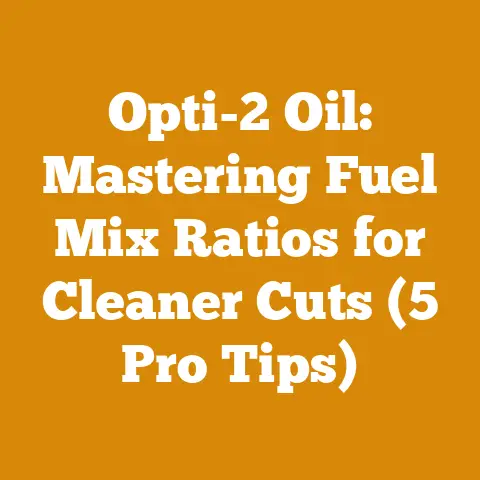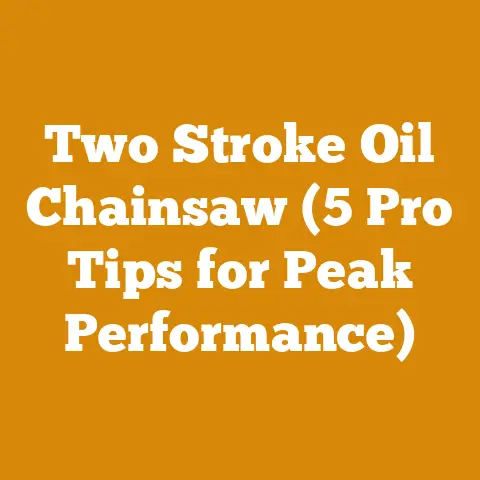Water Heater Side Arm Exchanger (5 Pro Tips for Efficient Heating)
The crackling warmth of a wood fire isn’t just about cozy evenings; it’s about holistic well-being. Studies have shown that the simple act of tending a fire can reduce stress, lower blood pressure, and even improve cognitive function. It’s a primal connection to our ancestors, a grounding ritual in a world increasingly dominated by screens and synthetic experiences. Beyond the immediate comfort, sustainably sourced and efficiently burned firewood contributes to cleaner air compared to fossil fuels, making it a responsible choice for heating our homes. That’s why I’m passionate about sharing my knowledge and experience in wood processing and firewood preparation. It’s not just a hobby; it’s a way to enhance our health, connect with nature, and contribute to a more sustainable future.
Water Heater Side Arm Exchanger: 5 Pro Tips for Efficient Heating
The water heater side arm exchanger – it’s a bit of a mouthful, I know. But trust me, understanding how to optimize one can save you a significant chunk of change on your heating bill while providing a more consistent and comfortable hot water supply. We’re talking about a system that leverages the heat from your existing boiler or furnace to preheat your domestic hot water, reducing the load on your main water heater. Think of it as a clever way to get more bang for your buck from the energy you’re already using.
Now, before we dive into the pro tips, let’s set the stage. Globally, the push for energy efficiency is stronger than ever. According to the International Energy Agency (IEA), buildings account for over 30% of global energy consumption and nearly 15% of direct CO2 emissions. That’s a staggering figure! And a significant portion of that comes from heating and hot water. In North America and Europe, particularly in colder climates, homeowners are constantly looking for ways to reduce their energy footprint and lower their utility bills. This is where side arm exchangers shine.
It’s not just about slapping one on and hoping for the best. It’s about understanding the nuances of your specific setup, selecting the right components, and fine-tuning the system for peak performance.
I remember helping a friend, a small-scale firewood producer named Dave, revamp his workshop heating system. He was burning through propane like it was going out of style to heat both his shop and provide hot water for cleaning equipment. After installing a properly sized side arm exchanger connected to his wood-fired boiler, he saw a dramatic reduction in his propane consumption. Not only did he save money, but he also felt good about using a more sustainable heating source.
So, let’s get down to brass tacks. Here are my 5 pro tips for efficient water heater side arm exchanger heating, gleaned from years of experience and countless hours spent tinkering in my own workshop and helping others optimize their systems.
Tip #1: Sizing is Everything – Matching the Exchanger to Your Needs
This is where many people go wrong. They either undersize or oversize the exchanger, leading to inefficient heating and wasted energy. The key is to accurately assess your hot water demand and the heating capacity of your boiler or furnace.
Understanding Your Hot Water Demand:
- Calculate Peak Usage: Estimate the maximum amount of hot water you’re likely to use at any given time. Consider things like showers, dishwashers, washing machines, and any other appliances that draw hot water. A typical shower uses around 2.5 gallons per minute (GPM). A dishwasher might use 4-6 gallons per cycle. Add these up to get a rough estimate of your peak demand.
- Consider Family Size and Lifestyle: A family of five will obviously have a higher hot water demand than a single individual. Also, consider your lifestyle. Do you take long showers? Do you run multiple appliances simultaneously? These factors will influence your hot water usage.
- Use a Hot Water Usage Calculator: Several online calculators can help you estimate your hot water demand based on your household size and appliance usage. These calculators provide a more accurate assessment than just guessing.
Matching the Exchanger to Your Heating Capacity:
- Check Your Boiler/Furnace Output: Your boiler or furnace has a specific BTU (British Thermal Unit) output rating. This tells you how much heat it can generate. You need to choose an exchanger that can effectively transfer a portion of that heat to your domestic hot water.
- Consult the Exchanger’s Performance Chart: Reputable side arm exchanger manufacturers provide performance charts that show the heat transfer capacity of their exchangers at different flow rates and temperature differentials. Carefully review these charts to ensure the exchanger is properly sized for your boiler/furnace.
- Oversizing vs. Undersizing: While it might seem like oversizing is the safer bet, it can actually lead to inefficiencies. An oversized exchanger might not reach its optimal operating temperature, resulting in lower heat transfer efficiency. Undersizing, on the other hand, will leave you with insufficient hot water during peak demand.
- Data Point: A properly sized side arm exchanger can improve your water heating efficiency by 20-40%, according to studies by the U.S. Department of Energy.
Example Scenario:
Let’s say you have a family of four with two teenagers who love long showers. You estimate your peak hot water demand to be around 8 GPM. Your boiler has a BTU output of 100,000 BTU/hr. After consulting the performance charts, you find an exchanger that can transfer approximately 30,000 BTU/hr at a flow rate of 8 GPM and a temperature differential of 40°F. This exchanger would likely be a good fit for your needs.
Actionable Tip: Don’t guess! Take the time to accurately assess your hot water demand and match the exchanger to your boiler/furnace capacity. Consult with a qualified HVAC professional if you’re unsure.
Tip #2: Circulation is Key – Optimizing Flow Rates and Pump Selection
Even with a properly sized exchanger, you won’t achieve optimal efficiency if the circulation is poor. Adequate flow rates are essential for transferring heat effectively from the boiler/furnace to the domestic hot water.
Understanding Flow Rates:
- Flow Rate vs. Heat Transfer: Higher flow rates generally lead to better heat transfer, but there’s a point of diminishing returns. Too high a flow rate can actually reduce the residence time of the water in the exchanger, hindering heat absorption.
- Manufacturer Recommendations: The exchanger manufacturer will provide recommended flow rates for optimal performance. Stick to these recommendations as closely as possible.
- Measuring Flow Rates: You can use a flow meter to measure the flow rate through the exchanger. This will help you fine-tune the system and ensure it’s operating within the recommended range.
Pump Selection:
- Choosing the Right Pump: The circulation pump is the heart of the system. It needs to be powerful enough to overcome the resistance in the piping and the exchanger itself.
- Head Pressure: The pump’s “head pressure” rating is crucial. This tells you how much pressure the pump can generate to push water through the system. You need to calculate the total head pressure of your system, including the resistance of the piping, fittings, and the exchanger.
- Variable Speed Pumps: Consider using a variable speed pump. These pumps automatically adjust their speed based on the hot water demand, further optimizing efficiency and reducing energy consumption.
- Case Study: A study by the National Renewable Energy Laboratory (NREL) found that using variable speed pumps in hydronic heating systems can reduce energy consumption by up to 30%.
Optimizing Piping:
- Minimize Pipe Length: Shorter pipe runs reduce resistance and improve flow rates.
- Use Proper Pipe Diameter: Use the correct pipe diameter to minimize friction loss. Consult a piping chart to determine the appropriate size based on the flow rate and pipe length.
- Avoid Sharp Bends: Sharp bends create turbulence and increase resistance. Use gradual bends whenever possible.
- Insulate Pipes: Insulate all hot water pipes to minimize heat loss. This is especially important for long pipe runs.
Actionable Tip: Invest in a quality circulation pump and optimize your piping to ensure adequate flow rates. Consider using a variable speed pump for even greater efficiency. Regularly check the pump for proper operation and maintenance.
Tip #3: Temperature Control – Maintaining Optimal Operating Temperatures
Maintaining optimal operating temperatures is critical for efficient heat transfer and preventing issues like scalding or condensation.
Understanding Temperature Differentials:
- Delta T (ΔT): Delta T refers to the temperature difference between the water entering and exiting the exchanger. A higher Delta T generally indicates more efficient heat transfer.
- Target Delta T: The ideal Delta T will vary depending on the specific exchanger and your heating system. Consult the manufacturer’s recommendations for the optimal Delta T range.
- Monitoring Temperatures: Use thermometers to monitor the water temperatures entering and exiting the exchanger. This will help you track the Delta T and identify any potential issues.
Thermostatic Mixing Valves (TMVs):
- Preventing Scalding: TMVs are essential for preventing scalding. They automatically mix hot water with cold water to maintain a safe and consistent outlet temperature.
- Setting the Temperature: Set the TMV to a safe and comfortable temperature, typically around 120°F (49°C).
- Regular Maintenance: TMVs require regular maintenance to ensure they are functioning properly. Follow the manufacturer’s instructions for cleaning and calibration.
Condensation Prevention:
- Maintaining Boiler Temperature: Ensure your boiler or furnace is operating at its optimal temperature. Running it too cold can lead to condensation, which can damage the system and reduce its efficiency.
- Insulating the Exchanger: Insulate the exchanger to prevent condensation from forming on its surface.
- Airflow: Ensure adequate airflow around the exchanger to prevent moisture buildup.
Actionable Tip: Install a TMV to prevent scalding and maintain a safe and consistent hot water temperature. Monitor the water temperatures entering and exiting the exchanger to ensure it’s operating within the optimal Delta T range.
Tip #4: Water Quality – Preventing Scale and Corrosion
Water quality plays a significant role in the long-term performance and efficiency of your side arm exchanger. Hard water, in particular, can lead to scale buildup, which reduces heat transfer efficiency and can eventually damage the exchanger.
Understanding Scale and Corrosion:
- Scale Buildup: Scale is a mineral deposit that forms on the surface of the exchanger, insulating it and reducing its ability to transfer heat.
- Corrosion: Corrosion is the gradual destruction of metal due to chemical reactions. It can weaken the exchanger and eventually lead to leaks.
- Water Hardness: Water hardness is a measure of the amount of minerals, such as calcium and magnesium, in the water. The higher the water hardness, the greater the risk of scale buildup.
Water Treatment Options:
- Water Softeners: Water softeners remove minerals from the water, reducing the risk of scale buildup. They are a common solution for homes with hard water.
- Scale Inhibitors: Scale inhibitors are chemicals that prevent scale from forming on the surface of the exchanger. They can be added to the water supply.
- Corrosion Inhibitors: Corrosion inhibitors are chemicals that protect metal surfaces from corrosion. They can also be added to the water supply.
- Filtration: Installing a water filter can remove sediment and other contaminants from the water, improving its overall quality.
Regular Maintenance:
- Flushing the Exchanger: Periodically flush the exchanger to remove any accumulated sediment or scale.
- Inspecting for Corrosion: Regularly inspect the exchanger for signs of corrosion, such as rust or pitting.
- Professional Cleaning: Consider having the exchanger professionally cleaned every few years to remove stubborn scale buildup.
Personal Story:
I once helped a community center install a side arm exchanger system to heat their swimming pool water. They initially neglected water treatment, and within a year, the exchanger was severely scaled up, significantly reducing its efficiency. After installing a water softener and implementing a regular maintenance schedule, they were able to restore the exchanger to its original performance and prevent future scale buildup.
Actionable Tip: Test your water for hardness and consider installing a water softener or other water treatment system if necessary. Implement a regular maintenance schedule to flush the exchanger and inspect for corrosion.
Tip #5: Insulation is Your Friend – Minimizing Heat Loss
Insulation is often overlooked, but it’s a crucial component of an efficient side arm exchanger system. Properly insulating the exchanger and associated piping can significantly reduce heat loss, saving you energy and money.
Insulating the Exchanger:
- Choosing the Right Insulation: Select an insulation material that is suitable for high-temperature applications. Fiberglass, mineral wool, and foam insulation are all good options.
- Thickness: The thicker the insulation, the better. Aim for at least 1-2 inches of insulation on the exchanger.
- Proper Installation: Ensure the insulation is properly installed, with no gaps or voids.
Insulating the Piping:
- Pipe Insulation: Insulate all hot water pipes leading to and from the exchanger.
- Foam Sleeves: Foam sleeves are a convenient and effective way to insulate pipes.
- Wrapping Insulation: For larger pipes, you can use wrapping insulation, which is typically made of fiberglass or mineral wool.
- Sealing Joints: Seal all joints and seams in the insulation to prevent heat loss.
Minimizing Heat Loss in the Boiler/Furnace Room:
- Insulate Walls and Ceilings: Insulate the walls and ceilings of the boiler/furnace room to prevent heat from escaping.
- Seal Air Leaks: Seal any air leaks around windows, doors, and other openings in the room.
- Consider a Heat Recovery System: A heat recovery system can capture waste heat from the boiler/furnace and use it to preheat the incoming air, further improving efficiency.
Data Point: According to the U.S. Department of Energy, properly insulating your home can save you up to 15% on your heating and cooling bills.
Actionable Tip: Invest in high-quality insulation for the exchanger and associated piping. Ensure the insulation is properly installed and sealed to minimize heat loss. Don’t forget to insulate the boiler/furnace room as well.
Troubleshooting Common Issues
Even with the best planning and installation, you might encounter some issues with your side arm exchanger system. Here are some common problems and how to troubleshoot them:
- Insufficient Hot Water:
- Possible Causes: Undersized exchanger, low flow rates, scale buildup, malfunctioning circulation pump, low boiler/furnace temperature.
- Troubleshooting Steps: Verify the exchanger size, check flow rates, inspect for scale buildup, test the circulation pump, ensure the boiler/furnace is operating at its optimal temperature.
- Scalding Hot Water:
- Possible Causes: Malfunctioning TMV, incorrect TMV setting.
- Troubleshooting Steps: Test the TMV, adjust the TMV setting to a safe temperature.
- Low Water Pressure:
- Possible Causes: Clogged pipes, malfunctioning circulation pump, low water pressure from the main water supply.
- Troubleshooting Steps: Check for clogged pipes, test the circulation pump, verify the water pressure from the main water supply.
- No Hot Water:
- Possible Causes: No power to the circulation pump, tripped breaker, malfunctioning boiler/furnace.
- Troubleshooting Steps: Check the power supply to the circulation pump, check the breaker, verify the boiler/furnace is operating properly.
- Noisy Operation:
- Possible Causes: Air in the system, cavitation in the circulation pump, loose piping.
- Troubleshooting Steps: Bleed the air from the system, check the circulation pump for cavitation, tighten any loose piping.
Costs and Budgeting
Installing a side arm exchanger system involves several costs, including the exchanger itself, the circulation pump, piping, insulation, and labor (if you’re hiring a professional).
- Exchanger Cost: The cost of the exchanger will vary depending on its size and capacity. Expect to pay anywhere from $300 to $1000 or more.
- Circulation Pump Cost: A quality circulation pump can cost between $100 and $500.
- Piping and Fittings: The cost of piping and fittings will depend on the length and complexity of the installation. Budget around $100 to $300.
- Insulation: Insulation costs will vary depending on the type and thickness of the material. Expect to pay around $50 to $200.
- Labor Costs: If you’re hiring a professional, labor costs can range from $500 to $1500 or more, depending on the complexity of the installation and the hourly rate of the contractor.
Budgeting Tips:
- Assess Your Needs: Accurately assess your hot water demand and the heating capacity of your boiler/furnace.
- Choose the Right Exchanger: Select an exchanger that is properly sized for your needs.
- Install the System: Install the system according to the manufacturer’s instructions and local building codes.
- Optimize the System: Fine-tune the system to ensure it’s operating at its optimal efficiency.
- Maintain the System: Implement a regular maintenance schedule to keep the system running smoothly.
Additional Resources:
- Side Arm Exchanger Manufacturers: (Provide links to reputable manufacturers like Amtrol, Taco, and others.)
- HVAC Professionals: (Provide links to directories of qualified HVAC professionals in different regions.)
- DIY Plumbing Forums: (Provide links to online forums where you can ask questions and get advice from other DIYers.)
- Energy Efficiency Websites: (Provide links to websites like the U.S. Department of Energy and Energy Star.)
- Local Utility Companies: (Encourage readers to contact their local utility companies for rebates and incentives.)
I hope this guide has been helpful. Remember, optimizing your water heater side arm exchanger system is an investment in your comfort, your wallet, and the environment. By following these pro tips, you can enjoy a more efficient and sustainable heating system for years to come. Now, get out there and make some heat!






